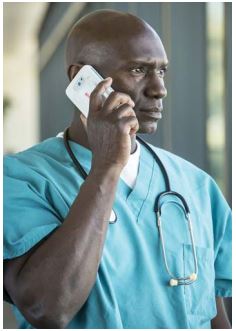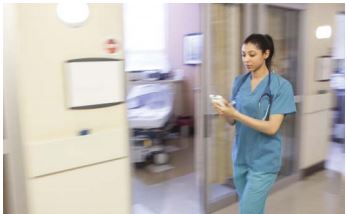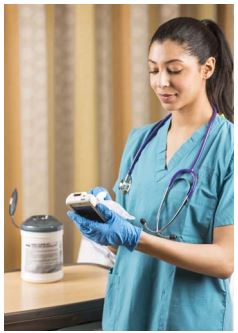Introduction
Smartphones have transformed the way healthcare providers communicate, and these mobile devices are poised to revolutionize the way hospitals deliver care in 2014 and beyond.
Texting long ago surpassed voice calls as the favored method of communication among the general population, and it is rapidly gaining favor in hospitals. Doctors and nurses already exchange patientrelated texts on their own personal phones at many facilities, and as more hospitals issue mobile devices to employees, the ability to communicate quickly and access and update patient data on the move has become a critical function.
Deploying mobile, flexible, and reliable IT tools to caregivers is a top priority for provider organizations that not only need to meet new regulatory and technology requirements, but want to do so efficiently. At Cedars-Sinai Hospital in California, for example, the combination of smartphones and a new software solution to help prioritize alarms resulted in faster response times for emergency conditions, and a 50 percent reduction in overhead pages. Laboratory values are received 10 minutes faster and nurses are able to spend more time at the bedsides of patients who require their attention, according to a case study published by the Robert Wood Johnson Foundation1.

The passage of the The Health Insurance Portability and Accountability Act (HIPAA), Health Information Technology for Economic and Clinical Health (HITECH) Act, and the Patient Protection and Affordable Care Act (PPACA, or ACA) have established new incentives to promote technology adoption, and created new regulations related to outcomes, patient safety, and documentation. In response, hospitals and other healthcare facilities have deployed a dizzying array of technology, from electronic medical record (EMR) systems and networked medical monitoring devices, to bar code scanners for medication administration at the bedside and hospital-provided mobile phones to improve team communication. While these efforts have provided improvements in patient safety and data sharing, they have also produced a patchwork of point solutions and a belt-full of hardware (pagers, pendants, VOIP phones, scanners) for nurses and doctors to carry. In the case of EMR systems, these technology initiatives have also produced complaints from caregivers that they are tethered to desktops or bulky workstations on wheels (WOWs) in order to update patient charts and view test results.
For nurses, this onslaught of new technology has only added to the stress and occasional chaos of the hospital fl oor. As an increasing number of electronic medical devices have been added to hospital rooms to help monitor patient vitals and deliver medication, the number of alarms and alerts has gone up exponentially. This has resulted in what is known in the industry as alarm fatigue, and it can have deadly consequences.

Any visitor to a hospital can attest to the nearly nonstop barrage of beeps, buzzes and overhead pages. Most of these alarms are not critical — an oxygen sensor may have detached from a patient’s fi nger, or a wire came unplugged. According to data from The Joint Commission, as many as 85 to 99 percent of those alarms do not actually require staff members to take any action. Clinicians begin to “tune out” those alarms over time, and if a particular piece of equipment generates a high number of unnecessary alarms, nursing staff have even been known to turn down or turn off those alarms. That can result in fatalities.
According to the FDA, there were more than 200 deaths linked to alarm monitoring between 2005 and 2010. In some hospitals, alarms have been integrated with existing pager systems, but these solutions don’t provide enough alarm data for nurses to accurately gauge the severity of the alert, and may notify multiple nurses, who then have no way of knowing who else may be responding to the call.

Telemetry nurses are generally tasked with monitoring these alarms, viewing patient data on screens at the nursing station and functioning as virtual air traffic controllers when it comes to dispatching staff to respond in person. Nurses spend time walking back and forth to the nursing station between visits to patient beds to assess patient status. New mobile solutions are emerging that will help hospitals optimize their efforts to improve communications. Care teams are replacing old VOIP phone systems with smartphones. EMR systems now feature support for mobile devices based on Windows, Android, and iOS platforms, and some even support two-way voice queries via smartphones. Medical devices are being integrated into hospital data networks. Providers want to consolidate these capabilities to produce tangible benefits for both staff and patients, and in a way that is more cost-effective and efficient than their legacy solutions. What is needed is a fully integrated, converged mobile device that can allow nursing staff to access EMR information, respond to alarms and alerts, communicate with patients while on the move, scan barcoded patient wristbands and medications, and share information with other caregivers in real time.